I bounce between bikes a fair bit. My stable is a bit of a revolving door, with a constant flow of review bikes passing through. Getting to try new bikes? It’s great, don’t get me wrong – but it doesn’t take long to realise that marketing shit-talk like ‘game-changing’ and ‘ground-breaking’ get thrown around a lot, and that more often than not, these terms are exactly that: marketing shit-talk.
Every so often, though, we get a bike that genuinely piques my interest with marketing shit-talk. One that I could see myself buying into. Specialized’s new Turbo Levo SL was one such bike. The Press Kit showed up in my inbox making statements like “this changes everything” and “so light you’ll forget it’s electric” and, after a quick read to learn a bit more about it, I was electrified (I’ll see myself out) – especially when Specialized said I could take one for a week. I’ll say it now: a week is definitely not enough time to put together a comprehensive review on this bike, but that’s okay, because the experience this Levo SL offers is completely different to anything else on the market, that I’ve ridden. And a week is plenty of time to fall in love with that experience.
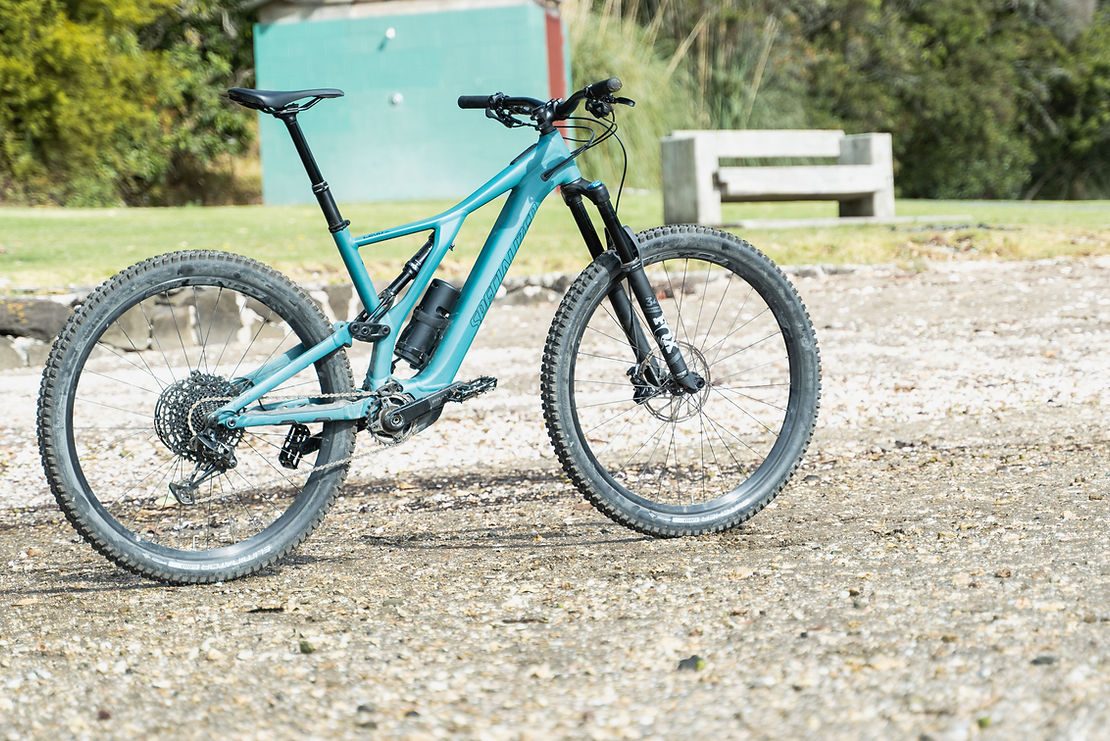
I’ve always been pro eMTB, and whilst I don’t think they’ll ever replace pedal bikes, they’ve definitely established a place in the market. Climbs become fun, they’re capable descending and you can fit in double the laps. They’ve always been substantially heavier than acoustic bikes, though, and that becomes abundantly clear once the trails start to open up. The added weight definitely helps keep things stable and gets your centre of gravity a little lower, but for the most part you can assume the word ‘playful’ won’t be used to describe an eBike – if you’re comparing it directly against a pedal bike. This is where the Levo SL is a little different.
Specialized already have two eMTBs in their line-up: the 150mm travelled Turbo Levo and the 180mm travelled Turbo Kenevo. Both multiply your power by about four times, giving you the ability to blast up hills faster than you ever dreamed of without a motor, but to get all that power there’s also a lot more weight. The S-Works Turbo Levo comes in at around 21kgs and the Turbo Kenevo comes in at around 24kgs. The Turbo Levo SL falls into a whole new category of eBike; prioritising weight over power output. The Turbo Levo SL Comp I got to ride comes in at just under 20kgs with pedals, a bottle cage and the SWAT Steerer tool, but instead of quadrupling your power like its big brothers, the Levo SL only doubles your power.
One of the biggest advantages that Specialized have when it comes to eBikes, is that they don’t rely on third-party manufacturers for the drive systems. Instead, Specialized manufacture their motors in Switzerland, giving them the ability to design their drive systems specifically around their bikes, versus manufacturing their bikes around a drive system by someone else. At the heart of the Levo SL, you’ll find Specialized’s new SL1.1 motor. Launched on Specialized’s Turbo Creo SL eRoad bike, the SL1.1 motor weighs 1.1kg less than the 2.1 motor that features on the Turbo Levo and the Kenevo and, unlike the 2.1 motor – which was designed to maximise power output – the 1.1 was designed to maximise weight savings. The Levo SL also features a 320Wh battery, versus the 500Wh or 700Wh batteries you’ll find in the Levo and Kenevo, to save a little more weight.
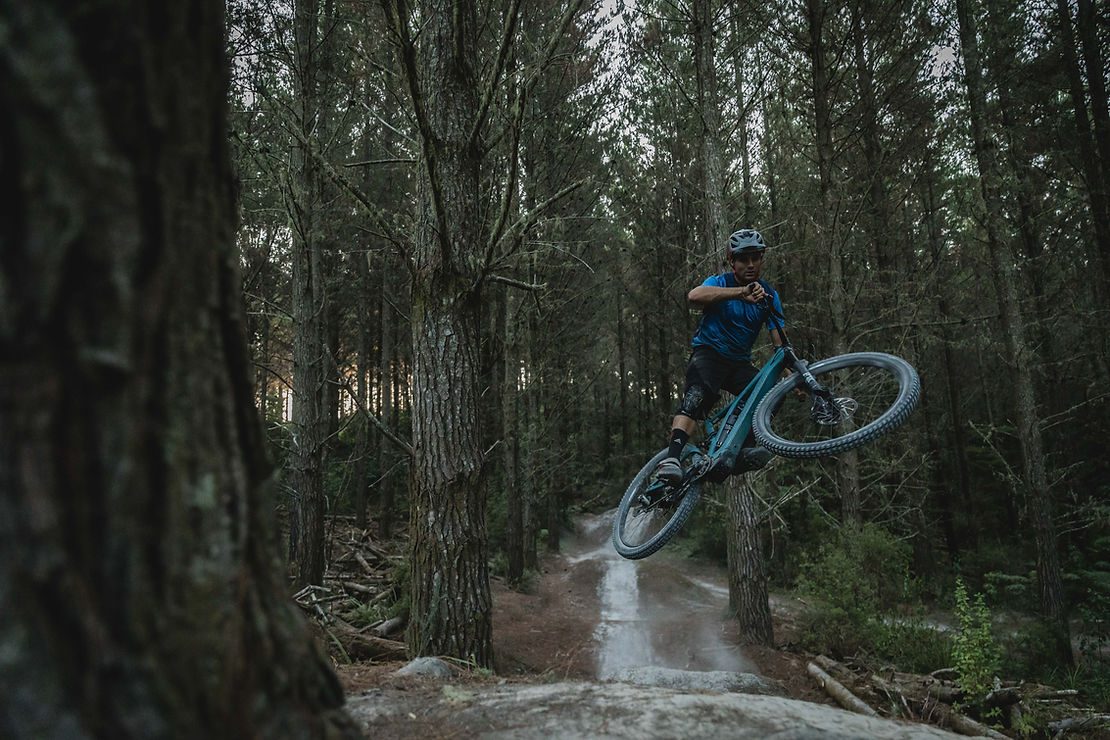
I picked up the Levo SL from Specialized’s Auckland office. After a quick walk-around the bike, they sent me on my way with the bike, as well as a 160Wh Range Extender. The first thing I was stoked on was being able to put the bike straight onto my roof rack. Usually, with eBikes, I have to lay the seats down in the back of my wagon and carry the bike that way. When you take the usual 22kg-plus weights into account, the swing towards 29” wheels and the whole longer and lower geometry thing into account, getting an eBike into the back of the car is never easy! This time around, it was onto the roof and straight out to my usual spot to cut a few laps and dial in the bike. I set the bike up with 25% sag front and rear, and headed for the up-track.
Right off the bat, you notice the Levo SL’s power isn’t overwhelming and in your face like its bigger siblings, but it’s for sure noticeable. It’s not point-and-shoot climbing like a more powerful eBike – where you can crank the power all the way up and ride over almost anything at 25km/h – but it’s enough power that you can still tackle the tougher lines you’d potentially shy away from without the assistance, and more than enough to get you motoring along on shallower gradients. Something I learnt pretty quickly (and that was pointed out by the staff at Specialized) is that because the SL1.1 motor only puts out 35Nm of torque, versus the SL2.1’s 90Nm, you really need to make sure to keep your cadence up to stay in the power range. The range is super wide, with optimal power delivery between 50 – 90rpm, but that does mean you can’t just pick a mid-range gear, turn the power up and point the bike up the side of a mountain knowing it will carry you up. I tackled the climb as I would on a pedal bike, taking the same lines and shifting gears at the same points – albeit a couple of gears further down the cassette than usual – and didn’t have any trouble keeping the power on. Compared to a more traditional drive system, I’d say the Levo SL’s maximum power rating is comparable to most brands’ Eco modes. With that said, the lighter Levo SL is much easier to climb on max power, than climbing on Eco on a heavier eBike.
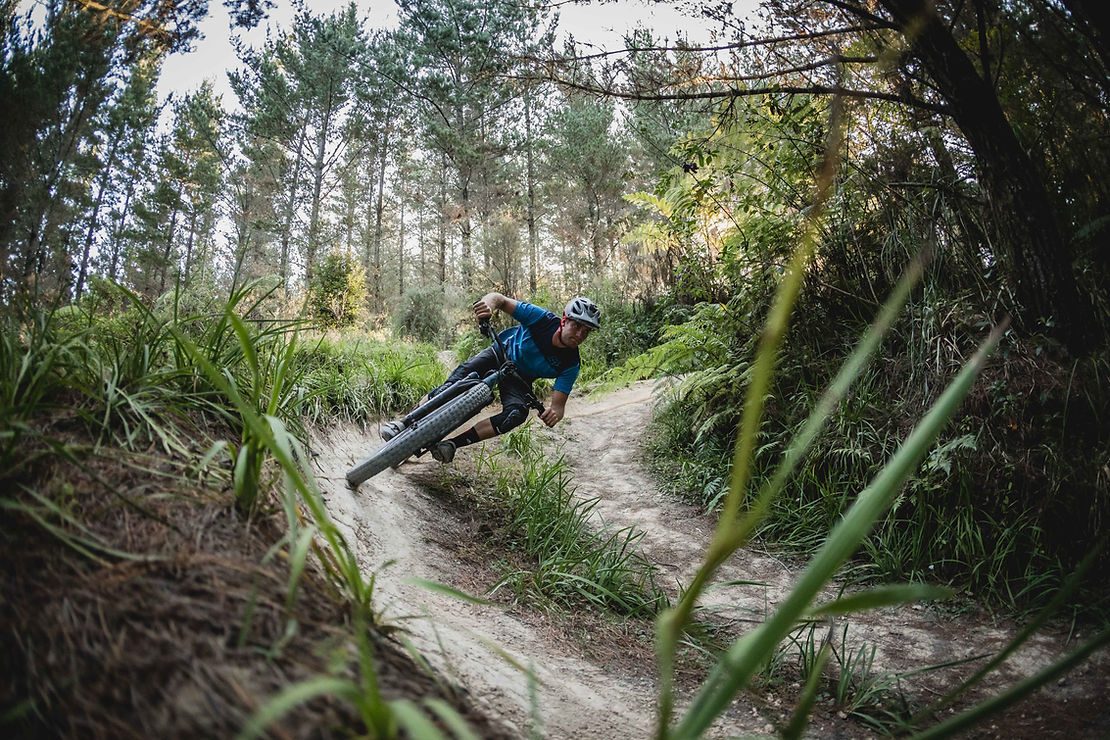
As far as power delivery goes, I think Specialized’s SL motor series offers the best power delivery of any eBike Drive System I’ve ridden, currently on the market. The power comes on and off super smoothly, with none of the sudden ‘joltiness’ (technical term) I’ve experienced with some of the other systems. Something I loved about the SL1.1 was that when the motor is off, or you’re travelling faster than the maximum assisted speed, it adds hardly any noticeable drag to your pedal stroke. This makes that one-last-lap climb, where your battery dies midway, just a little bit nicer – although you do notice the extra 5-odd kilos the Levo SL Comp has on your average 150mm trail bike. While we’re talking batteries, the 320Wh battery offered up plenty of life for rides up to two hours long. In two hours, I managed just under 1,100m of vertical gain over 30kms and used up 88% of the battery without riding super battery-conscious. Something to bear in mind, though, is that you can’t expect to ride the Levo SL like an eBike. To make the most of it, you’ll still need to get your heartrate up and put in some work. Rather than thinking of the Levo as an eMTB, you’re probably better off thinking of it as an assisted mountain bike, with the motor giving you a firm push up the hill versus giving you the ability to rail uphill berms. On the highest power setting, the bike will winch you up the hill to an extent, but you’ll chew through battery a ton faster. If you want more battery life out of the bike, Specialized make a 160Wh Range Extender that fits inside your bottle cage and tidily connects up to the charge port – a really nice tidy option to milk some extra kilometres out of your ride.
Before we get into my feedback on how the bike rides, we may as well touch on the Mission Control app Specialized have created. The Mission Control app grants you full control of your Levo SL, allowing you to customise motor modes and bike settings, record rides, diagnose problems, check the health status of the drive system and, amongst other things, utilise Smart Control. Smart Control automatically adjusts motor power based off your remaining ride distance, to make sure you don’t run out of battery. All you need to do is enter a few parameters (ride distance, how much battery you have left etc) and the Mission Control app will figure out the rest using an algorithm that’s based on data gathered over thousands of rides. It’s worth noting that the bike rides completely fine without hooking it up to the Mission Control app, something I can confirm as I forgot to pair it up more times than I remembered.
Now onto the build. As mentioned earlier, I tested the Levo SL Comp, which comes spec’d with SRAM Guide R brakes, a SRAM NX drivetrain, a 150mm Fox 34 with the GRIP damper, a Fox Float DPS Performance rear shock, a Xfusion 150mm dropper and Roval Traverse 29 wheels – all bolted to an aluminium frame. Considering the bike has an RRP of $10,500, this spec isn’t even close to what you’d hope to get from a pedal bike, for that money. For reference, $20 more will get you an S-Works Stumpy with AXS, and $1,500 or so more will get you an S-Works Turbo Levo. The price for the Levo SL sounds high, and I’d agree that it is but if someone was to give me $12,000 to buy either the Levo SL or the standard Levo, I’d still have a hard time deciding – and here’s why…
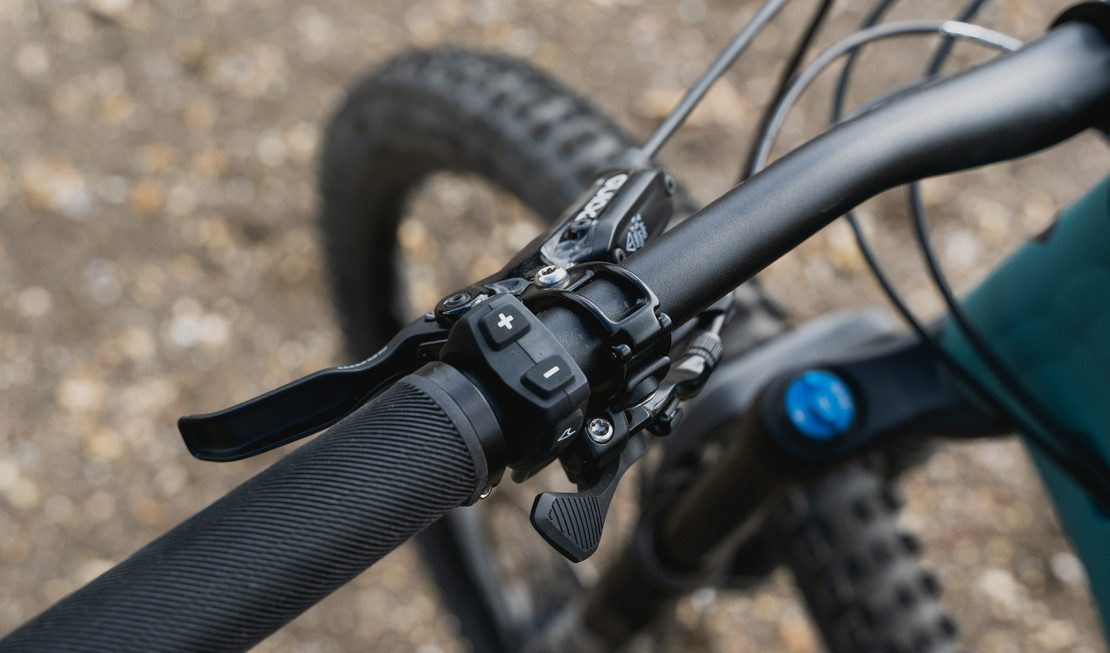
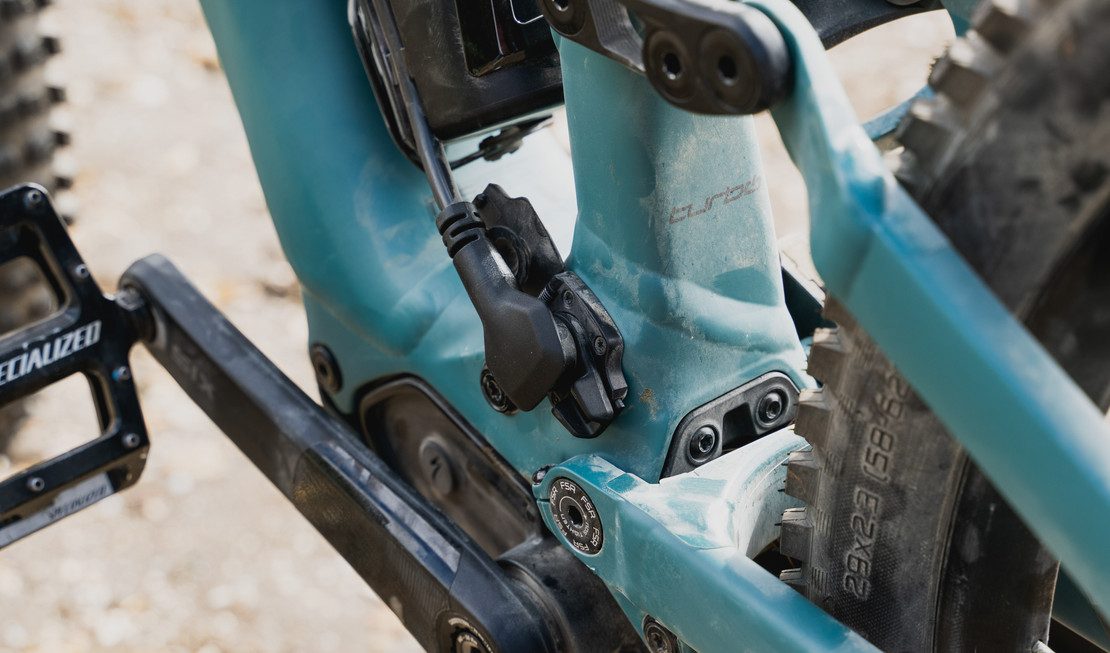







The Levo SL rides really well and leans much closer to the handling characteristics of a standard mountain bike, than an eBike. I had high hopes for this bike and it’s safe to say Specialized delivered. As mentioned, I started with 25% sag front and rear. On climbs the bike feels great, but I did find the front wheel a little light, which was amplified when I dropped a little pressure out of the rear shock. That’s not to say it was an issue, though, because once you’re aware of the light front wheel, it’s easy to manage without having to take any extreme measures. I never struggled to keep it down when it got steep, and it wasn’t ever difficult to get the front wheel to hook in on turns. I’d call it a handling characteristic rather than a problem. For the other 95% of climbs though, the bike did exactly what it should do: climb. The extra power helps tow you up the hills and because the bike is light and you’re not always charging up hills at the same speeds some descend at (as per other eBikes) the experience is way closer to that of a standard mountain bike, leaving you with a feeling of satisfaction at the top because you still feel like you’ve done something. The bike is light enough to be pretty manoeuvrable in tight ‘n techies, but you won’t be hopping your back wheel around with ease. Technical climbs are where the SL1.1 motor really shines. The smooth power delivery makes it a ton easier to work the bike around tight corners and over rocks and roots, somewhere I’ve struggled on other eBikes due to the initial surge of power.
It really becomes clear how good this bike is on the descents. Even with the Fox 34, something I personally would spec on a 150mm bike, the bike eats up trails. The bike hits a nice sweet spot between benefiting from the stability a few extra kilos gives you, and shaving off enough kilos to make the bike feel light and playful downhill. Thanks to our long, hot summer all of my local riding spots are bone-dry and dusty. The playful nature of the Levo SL meant my back wheel was skipping around a fair bit at 25% sag, but by dropping to 30% the back end was a little more planted and composed, especially on the way into corners.
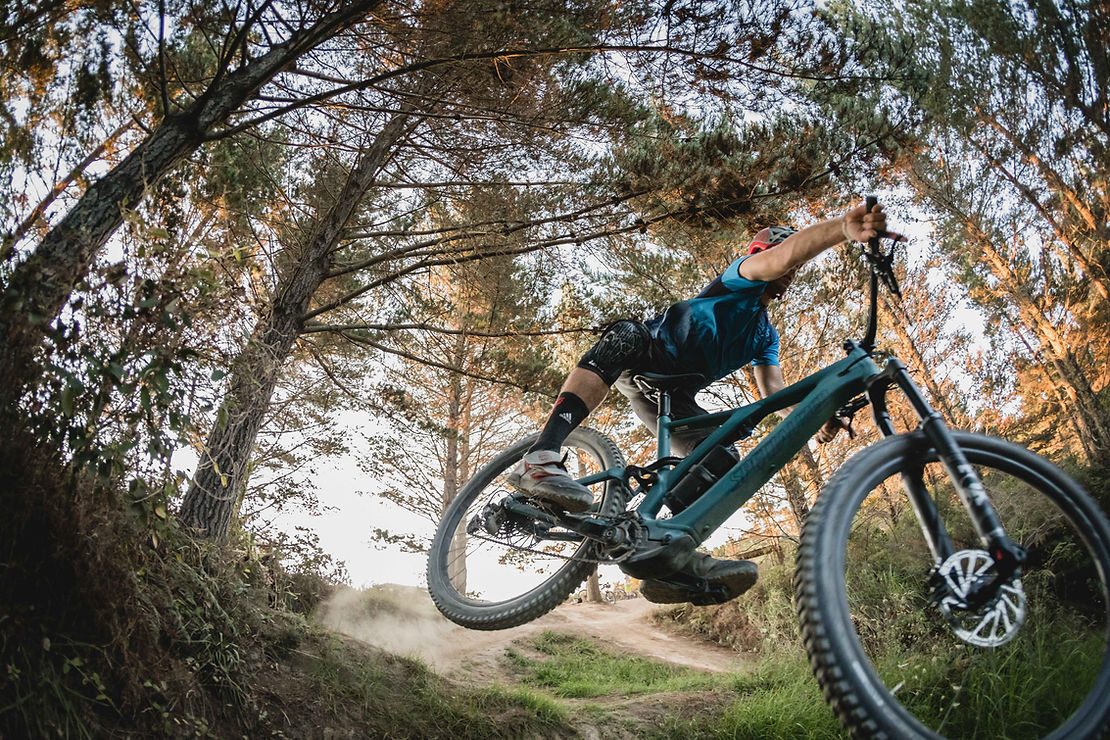
It’s easy to feel like a bit of a passenger on eBikes once the trail points downhill, but that’s not the case with the Levo SL. Once again, the Levo SL feels much closer to an acoustic bike than it does an eBike, and it’s super easy to hold it wide-open and pin it. Regardless of how much speed you build up, the bike is eager to skip around the trail and go wherever you point the front wheel. On steeper riding, it’s much the same – the bike just wants to go fast and bounce around the trail. When I say bounce around the trail, I mean it in the best possible way: the bike encourages playful riding and I’d imagine that as you go up in spec, and therefore down in weight, this encouragement only grows.
I think the 29” wheels really help out here. I’ve found eBikes with 27.5” wheels tend to struggle a bit with sitting on top of roots and rougher sections of trail, due to the extra weight of eBikes. The 29” wheels deal with the added weight a bit better and skip across trail features a little nicer. You do find the limitations of the 34, especially if you’re out slapping berms and riding steep trails. The best way to think about the forks is probably the following: if I were to own a Levo SL I’d eventually upgrade to 36s or similar, but I wouldn’t be in a huge rush to do so. The same could be said for the rear shock – it does heat up and start to feel a little more ‘basic’ on longer descents and for some will definitely be under-shocked, but suspension is pretty difficult to spec when you consider riders’ ability, their local trails and other factors.
Overall, my thoughts? I love the Levo SL.
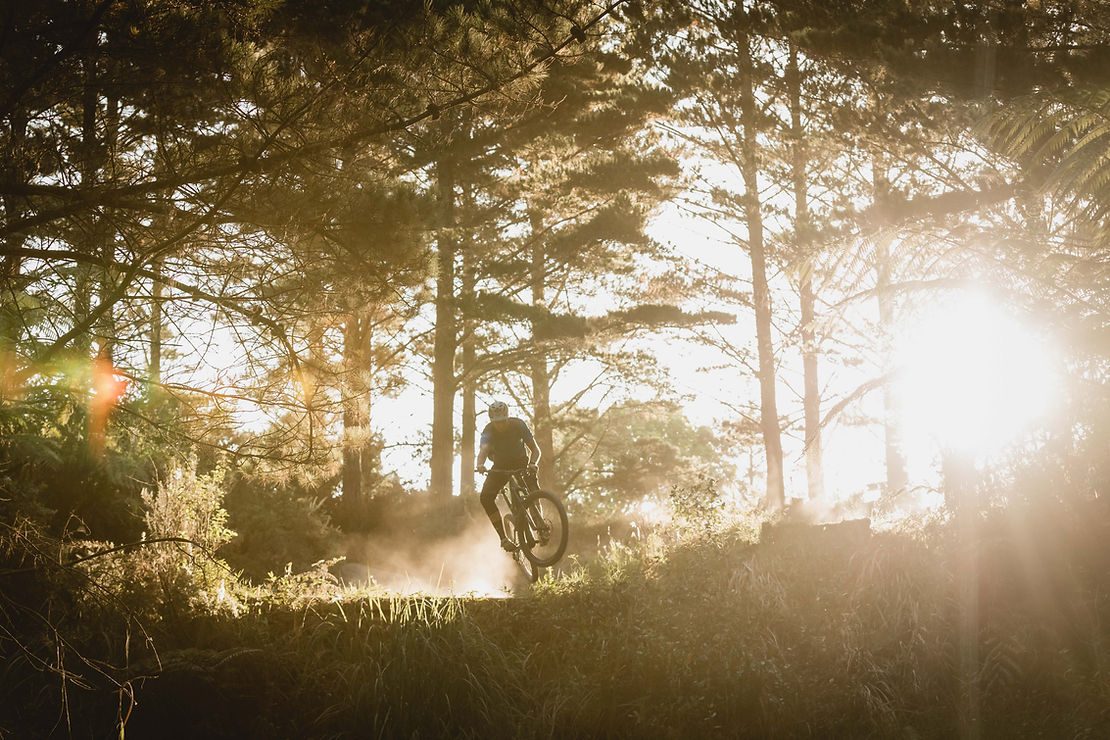
It’s the first eBike I’ve ridden that I’d happily own as my only bike. I’ve been describing it as the ‘mountain biker’s eBike’. That’s not to discredit other eBikes on the market, they’re great for plenty out there, whether it be due to lack of fitness, injury or just the desire to pin it up and down hills. I think where the Levo SL really shines, is by taking all of the feelings we associate with mountain biking – from slogging up climbs, to skipping and bouncing down hills to bunny hopping logs – and putting together a package that emulates those feelings whilst still offering enough of an e-vantage (I’m coining that term) to get in more riding and go further.
Words: Cam Baker
Images: Cam Baker & Cameron Mackenzie

